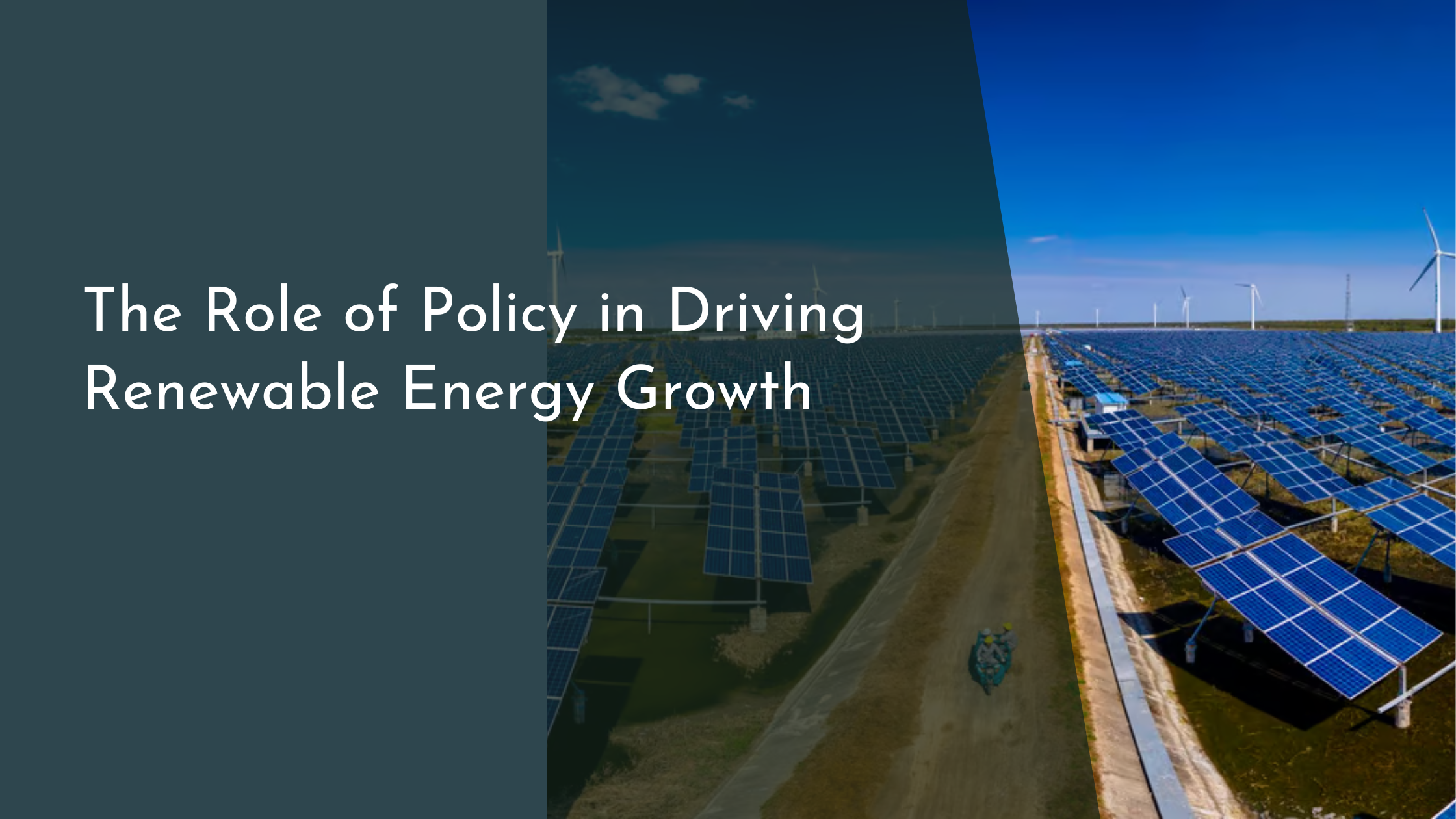The Role of Policy in Driving Renewable Energy Growth
In recent years, the transition towards renewable energy has become a pivotal component of global efforts to address climate change and achieve sustainable development. Central to this transition is the role of policy, which acts as a catalyst in driving the adoption and expansion of renewable energy technologies. From financial incentives to regulatory frameworks, policies shape the landscape of energy production and consumption, providing the necessary framework for innovation and investment. This article delves into the intricate role of policy in fostering renewable energy growth, exploring various policy measures, successful implementations worldwide, and the future trajectory of renewable energy policies.
Understanding Renewable Energy Policies
Renewable energy policies encompass a broad spectrum of strategies and regulations designed to promote the adoption of clean energy sources such as wind, solar, hydroelectric, and biomass. These policies typically aim to reduce greenhouse gas emissions, enhance energy security, and stimulate economic growth. At their core, renewable energy policies seek to level the playing field for renewable technologies, which have historically been at a cost disadvantage compared to fossil fuels. By addressing market failures and providing financial support, these policies help to overcome barriers such as high initial capital costs and lack of infrastructure, which can impede the development of renewable energy projects.
The effectiveness of renewable energy policies largely depends on their design and implementation. Key elements include setting ambitious but achievable renewable energy targets, creating stable and predictable policy environments, and ensuring compatibility with existing energy systems. Policymakers must also consider the socio-economic impact of these policies, striving to ensure a just transition that includes retraining programs for workers displaced by the decline of fossil fuel industries. Additionally, stakeholder engagement plays a crucial role in the policy-making process, with input from industries, communities, and environmental organizations helping to shape policies that are both effective and equitable.
Key Policies Fueling Renewable Growth
One of the most influential policy tools in the renewable energy sector is the Feed-in Tariff (FiT), which guarantees a fixed, premium price for electricity generated from renewable sources. This policy mechanism provides investors with the confidence needed to commit to renewable energy projects, knowing they will receive a stable return on their investment. By ensuring long-term contracts, FiTs have successfully accelerated the deployment of renewables in countries like Germany and Spain, demonstrating their effectiveness in reducing the cost of renewable technologies and increasing their market share.
Another critical policy driver is the Renewable Portfolio Standard (RPS), which mandates that a certain percentage of electricity sold by utilities must come from renewable sources. This policy not only drives demand for renewables but also promotes competition, innovation, and cost reduction within the industry. The RPS model has been particularly successful in the United States, where states with higher renewable energy standards have seen significant growth in clean energy capacity. By setting clear targets and compliance frameworks, RPS policies create a predictable market environment that encourages both private and public sector investment in renewables.
Case Studies: Success Stories in Policy Impact
Germany’s Energiewende policy, which translates to “energy transition,” is often cited as a remarkable success story in renewable energy policy. Initiated in the early 2000s, the Energiewende aims to transition Germany to a low-carbon, nuclear-free energy system. Through a combination of FiTs, RPS, and substantial government investment, Germany has become a global leader in renewable energy, with wind and solar power accounting for a significant portion of the country’s electricity generation. The policy’s success lies in its comprehensive approach, addressing technical, economic, and social dimensions of the energy transition.
Denmark is another exemplary case of effective renewable energy policy. The Danish government has implemented a wide array of policies to promote wind energy, including tax incentives, direct subsidies, and government-backed research and development programs. As a result, Denmark now boasts one of the highest wind power penetration rates in the world, with wind turbines supplying nearly half of the country’s electricity needs. The success of Denmark’s policies highlights the importance of a supportive regulatory environment and the role of public-private partnerships in advancing renewable energy technologies.
The Future Outlook: Policies Shaping Tomorrow
Looking to the future, the role of policy in renewable energy growth is expected to become even more crucial as countries strive to meet ambitious climate targets set by international agreements such as the Paris Accord. Emerging policy trends include the integration of digital technologies to enhance grid management and efficiency, as well as the development of new financial instruments to attract private investment. Additionally, there is growing emphasis on international collaboration, with countries working together to harmonize standards, share best practices, and foster technology transfer.
Moreover, as the renewable energy landscape evolves, policymakers must remain adaptable, continuously revising and refining policies to address new challenges and opportunities. This includes addressing the intermittency of renewable energy sources through policies that support energy storage solutions and grid upgrades. Furthermore, as distributed energy resources become more prevalent, there is a need for policies that empower consumers and communities to participate in the energy transition actively. By fostering innovation and inclusivity, future policies can ensure that renewable energy growth is both sustainable and equitable.
The role of policy in driving renewable energy growth cannot be overstated. As this article has illustrated, well-designed and effectively implemented policies have the power to transform energy systems, stimulate innovation, and catalyze economic growth. By providing the necessary support and incentives, policies create an environment where renewable energy can flourish, ultimately contributing to a more sustainable and resilient future. As we look ahead, the continued evolution and refinement of renewable energy policies will be essential in meeting global energy needs and combating climate change. With a collaborative and forward-thinking approach, policymakers can ensure that the momentum of renewable energy growth continues unabated, paving the way for a cleaner, greener world.

